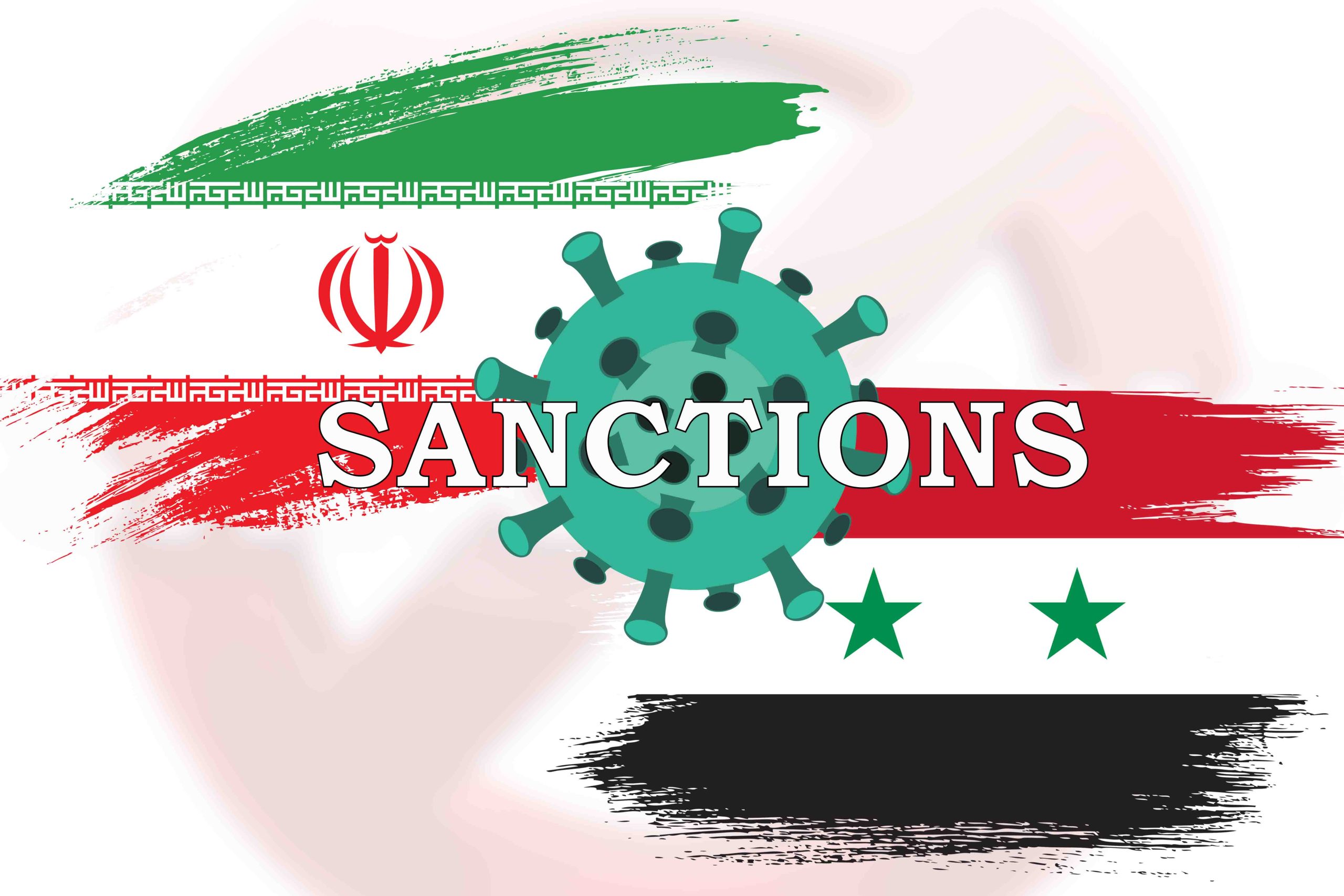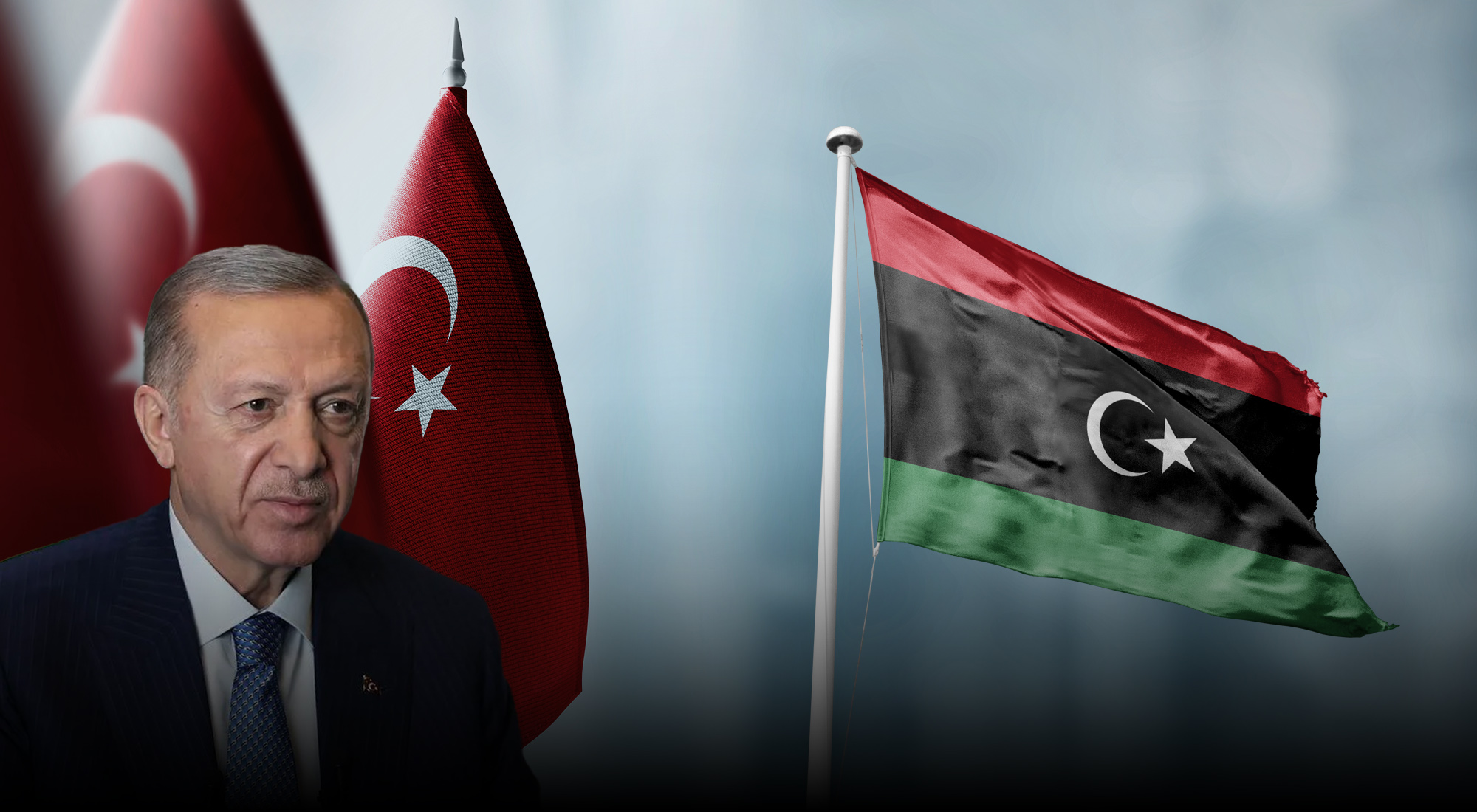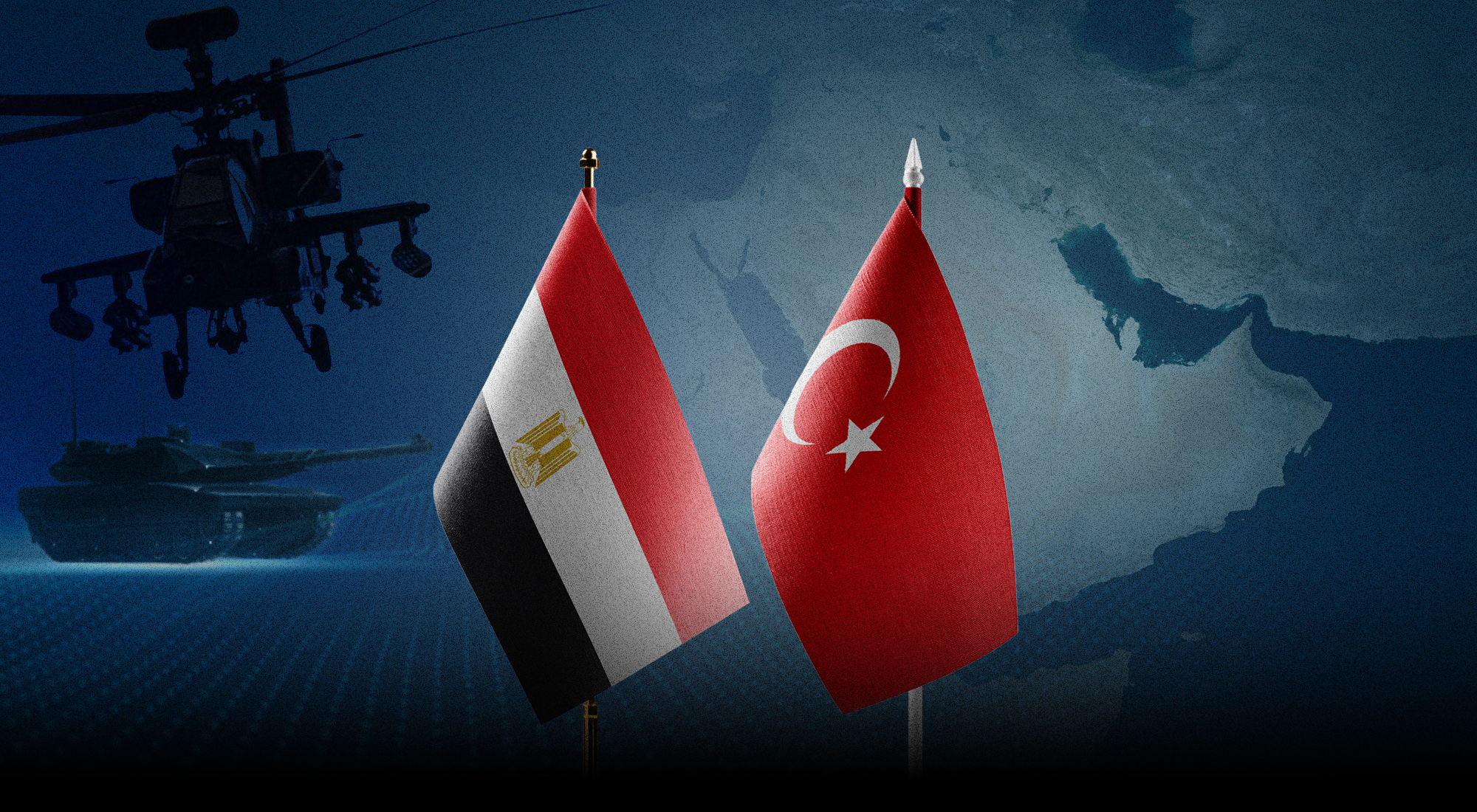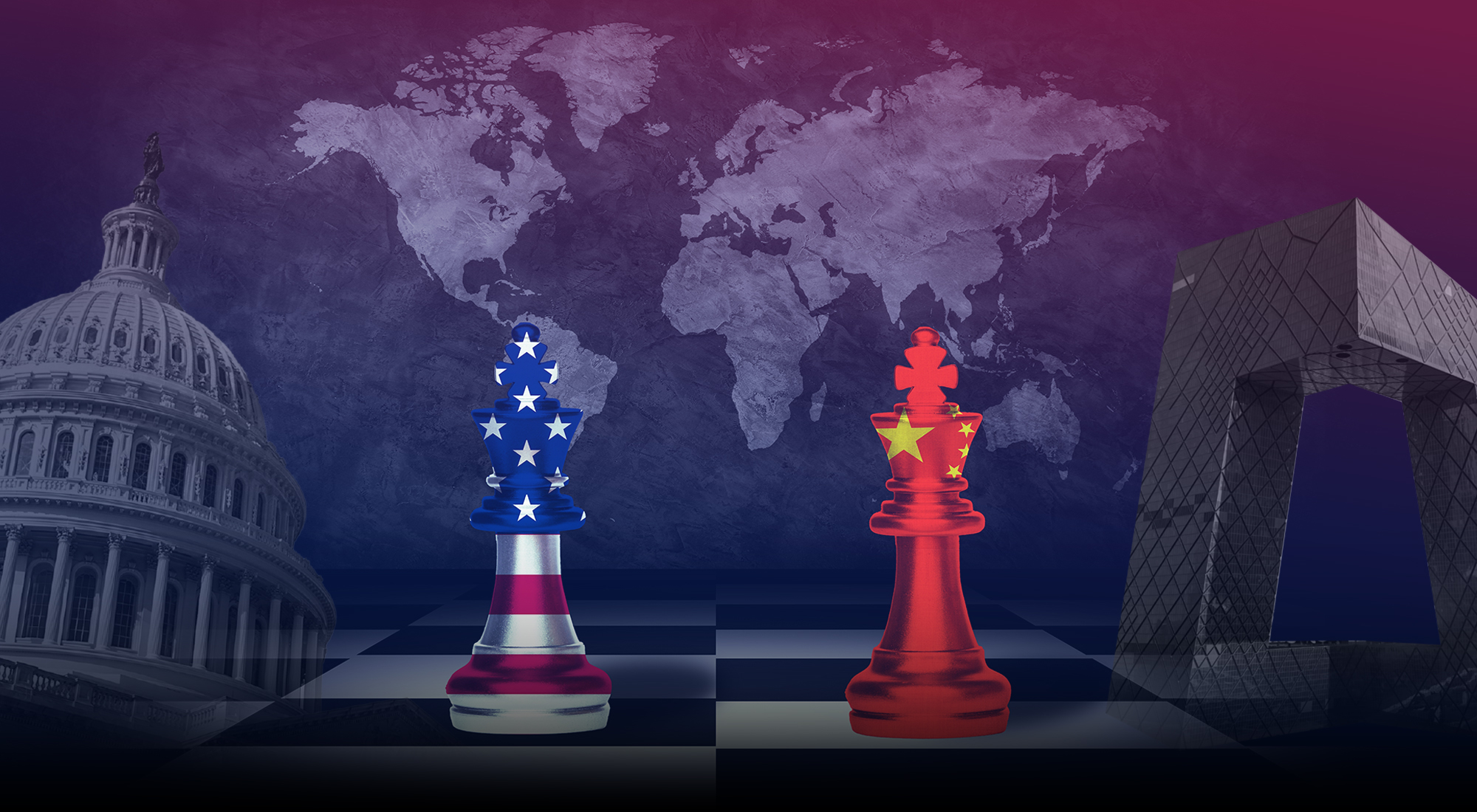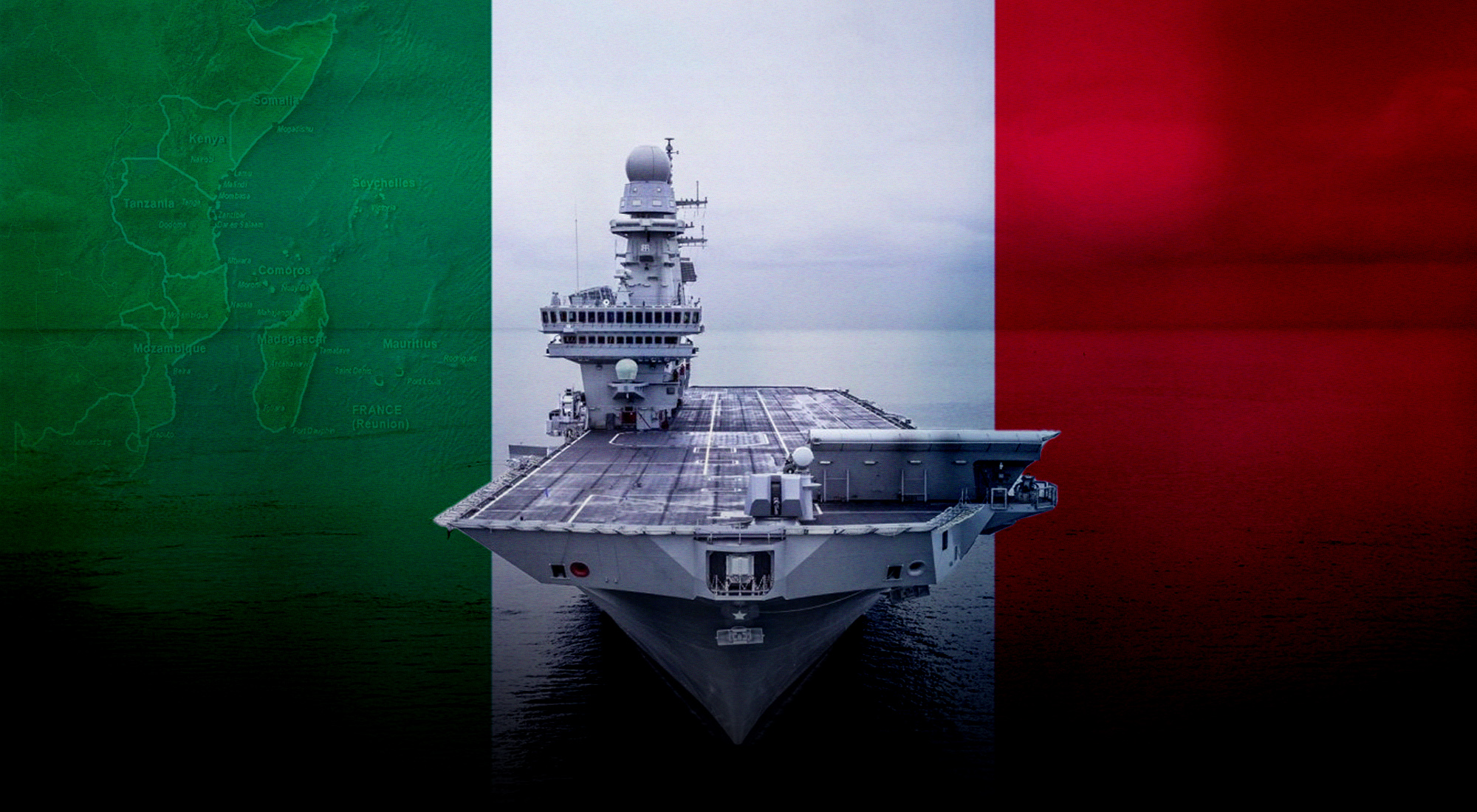A debate is raging about the role of sanctions during the coronavirus pandemic. As Covid-19 spreads, many states in the developing world, especially those under sanctions or blockades, and those in conflict situations are struggling to cope up with its consequences. Such states include Iran, Syria and the occupied Palestinian Territories, where the pandemic could potentially wreak havoc.
China, Russia, Iran, Syria, DPR of Korea, Cuba, Nicaragua, and Venezuela have publicly urged the United Nations to support the dropping of all coercive sanctions against those countries affected. To be clear, several of these states such as China and Russia have sufficient resources and are as capable as any other of tackling the pandemic. All these countries are calling for the complete removal of what they term to be ”illegal” sanctions, not merely temporary relief-based on humanitarian grounds. This leaves them open to the charge of using the pandemic for their political ends rather than prioritizing the immediate interests of their citizens. Given the lamentable human rights records of some of the countries in question, this should not come as a surprise.
Many questions arise. Will lifting, suspending, or easing these sanctions help these countries and their people? Is the system properly designed if the sanctions-hit healthcare systems as they are not supposedly designed to harm innocent civilians? Would easing sanctions bolster the very regimes that the sanctions are designed to restrict, and if so, is that a price worth paying if thousands of lives may be saved? Is it in the interest of other powers to assist all countries to stem this pandemic purely to get it under control? Are these regimes capable of reacting more effectively to the pandemic and can the outside world ensure this happens?
This paper will examine how sanctions regimes, particularly those imposed by the US and EU, impact on such states with a particular focus on Iran and Syria and the extent to which emergency sanctions relief might be provided. It will examine whether or not the sanctions were appropriate in the first place or likely to succeed in bringing about a change in the behavior of the Iranian and Syrian regimes.

Sanctions regimes
At present, there are no direct United Nations sanctions actively in force on either Iran or Syria although sanctions on ISIS have affected both the countries. The US has imposed sanctions on both Iran and Syria, while the EU maintains sanctions against Syria.
The US sanctions are key in the Iranian case. Sanctions were re-imposed by the Trump administration on Tehran after the US pulled out of the Joint Comprehensive Plan of Action (JCPOA) in 2018. These sanctions are designed as part of a “maximum pressure” strategy to prevent Iran from becoming a nuclear-armed state while also reining in its activities in the Middle East that are contrary to the interests of the US and its allies. In the case of Iran and Syria, the existing US sanctions have an extra-territorial impact. European companies, in particular, had to determine whether to continue business with the US, the world’s largest economy, or seek small contracts with Iran. In short, the American sanctions have had a profound chilling effect on trade with Iran and by extension Syria.
In theory, there is a humanitarian exemption. US Secretary of State Mike Pompeo was clear on 17 March: “We have an open humanitarian channel to facilitate legitimate transactions even while ensuring our maximum pressure campaign denies terrorists money.”[1] Officials are right to highlight that the US sanctions do have waivers and exemptions for medical goods.
However, the reality is that the effectiveness of these sanctions means that international banks are too scared to do business with Iran for fear of consequences. In addition, the reduction in Iran’s foreign currency reserves means that it does not have the resources to import medical equipment.
In the case of Syria, the US and the EU imposed extensive sanctions back in 2011 and have gradually added to these ever since. Previous US sanctions were far less aggressive than those on Iran until at least 2003 when the US Congress passed the Syria Accountability Act (SAA). US sanctions will be further tightened when the Caesar Act comes into force in June 2020.
EU sanctions are slightly narrower, restricting trade in specifically listed categories of products. However, they were very significant given the EU’s previous level of trade with Syria. The EU financial sanctions restrict certain forms of transactions with some Syrian financial institutions as opposed to the US’s full blanket ban. What perhaps hit the Syrian economy hardest was the EU ban on trade in Syrian oil and petroleum products.
Specific individuals are under sanctions in both the case of Syria and Iran. In any debate on amending sanctions, it is hard to see this type of sanctions being lifted, but sanctions on institutions not least banks might have to be reviewed if the aim is to allow for provision and delivery of humanitarian relief.
The EU can lift sanctions with the unanimous consent of member states on the condition that such a decision is reviewed annually. The US administration has some latitude to do likewise. More than a year after it was first introduced, the EU managed to use its special system, known as INSTEX, for provisions of humanitarian goods to Iran.
The first transaction was for 500,000 Euros[2] specifically for dealing with the coronavirus outbreak. However, it will not be sufficient to entirely mitigate the impact of US sanctions. Banking and financial institutions will continue to need clarity about what legitimate business they can engage in Iran without being subject to punitive consequences.
Any easing of sanctions on Syria must involve existing sanctions on the country’s Central Bank to enable financial transactions to take place. Even if trade in certain products was permitted without this, Syria would have no mechanism to make international transactions.
Iran and Covid-19
Iran has endured the worst outbreak of coronavirus in the Middle East, with over 4,500 deaths, according to official figures.[3] These numbers could be much higher according to unofficial sources.
Why did Coronavirus hit Iran so hard? The first official cases in Iran were acknowledged on 19 February 2020 in Qom. At that stage, the Iranian authorities downplayed the outbreak. It took almost a month for more stringent measures to be taken. The World Health Organization (WHO) has, however, warned that the real figures could be much higher because, like many developing economies, Iran does not have the testing capacity.
The Iranian authorities should shoulder part of the blame. Their initial response lacked urgency and appeared not to take the threat seriously. It should be stressed that Iran is not the only country accused of a slow response. Iranian officials also provided mixed messages that the country was facing a massive humanitarian crisis while also stating at the same time that the country needed no help. It is not clear why the Iranian authorities rescinded the permission for the medical charity, Médecins Sans Frontières (MSF) to set up a field hospital in Isfahan when all the materials for the treatment center had arrived in the country.[4]
This leaves a major question unresolved. Iran has demanded the full lifting of all sanctions, notably not only temporary suspension. External powers such as the US might be persuaded to adopt some form of temporary partial suspension, but it is not clear that Iran would agree to this and the opportunity to take advantage of any bespoke mechanism to provide assistance that came from sanctioning powers.
The fragile domestic economy was a factor in Iran’s slow response to the outbreak and initial refusal to impose a lockdown. Iran currently suffers from an inflation rate of 34.8 percent.[5] According to Ali Rabiei, President Hassan Rouhani’s spokesman, “7 million Iranians have been left jobless or suffering wage cuts because of the restrictions imposed by the government over the last month.”[6]
Iran has also continued to spend vast funds on weapons systems and support for its favored proxy militias abroad. The Iranian Navy has just announced plans for giant submarines and an additional 6000-ton destroyer.[7] Many may suspect that this is for the show, but at a time when Iran is in desperate need of assistance, it sends conflicting signals about its situation.
This is also the case in terms of its efforts in neighboring countries. Iran continues to exert considerable influence in Iraq, Syria, Lebanon, and Yemen. It will attempt to ensure that the pandemic will not see its influence in these states decrease and is prepared to deploy resources to that end regardless of the knock-on effect for its citizens.
In March, Iran requested assistance from the International Monetary Fund (IMF) to the tune of $5 billion, for the first time since the 1960s. As yet, no assistance has been granted with Iranian officials believing that the US is blocking any support.[8] President Rouhani lost no time in pointing the finger at Washington: “It will go down in history that the While House has been, even before now, a terrorist on economic issues, but now it is a terrorist in matters of medical treatment too.”[9]
This is the risk inherent in the current US stance: the Iranian regime will not hesitate to blame external powers to cover up its failings. Instead of intensified hostility, a period of at least limited, mutually beneficial cooperation is required to save lives and stop Covid-19.
Syria and Covid-19
While Iran and Syria are both under US sanctions, there are significant differences in the situation at this juncture.
Firstly, based on official figures, the Covid-19 outbreak in Syria is not as severe as Iran. As of 13 April, the authorities acknowledged just 25 cases and two deaths. However, the Syrian authorities have arguably been less candid about the situation than their Iranian counterparts. In private conversations with doctors inside Syria, it is clear that the situation is far worse and that many cases of coronavirus-like fatalities have been experienced.
Whatever the true figures are, Syria is sadly ripe for a devastating outbreak. The country’s population is exhausted through nine years of wars and the economy is in free fall with massive unemployment, inflation, and the Syrian pound running at its lowest ever rate against the dollar.
Moreover, Syria has even less capacity to handle the pandemic than Iran. For over nine years the country has suffered from crises, wars, and extremism, as well as the rule by an unaccountable, incompetent dictatorial regime. The health infrastructure is devastated with only 58 hospitals out of 111 functioning. Syria’s health sector has the capacity to treat just 6,500 cases[10] at any one time, though this varies from province to province. Deir Ezzour province does not have one single ICU bed available and Aleppo has only five[11].
Certain communities are particularly vulnerable. Firstly, in Idlib in the northwest under opposition control, the situation it the most acute. Crowded and lacking in hygiene, the camps for Internally Displaced Persons (IDP) are perfect breeding grounds for the virus. Secondly, the regime’s prisons are overcrowded and once again susceptible to a dangerous outbreak.
Syrians are clearly in desperate need of external assistance. Some countries such as Kuwait and the UAE have already sent humanitarian aid. The current sanctions do not prevent this, though they do make it much harder. In addition, the Syrian authorities have also been obstructive in the distribution of assistance. A failure to be honest about the scale of the threat also does not help. The regime insists on the full lifting of all sanctions.
Conclusion
Iran and Syria both face major threats from the spread of Covid-19; one that is already materializing in the case of Iran. Both countries are in a compromised position in terms of being able to cope, with their economies in ruins, and in the case of Syria, their healthcare system partially destroyed.
The US and EU sanctions limit the options for assisting the Iranian and Syrian people. Even with waivers for medical equipment, both states cannot import the necessary medical supplies and expertise, or even foodstuffs to care for their population. The banking sanctions mean that it is difficult to make international transactions, and the economic impact of the sanctions combined with other factors mean that there is very limited purchasing power.
The US, the EU, and other sanctioning powers do have options should they choose to take them up. Temporary suspension of elements of the sanctions regimes that hamper both countries’ efforts to deal with Covid-19 must be permitted until such time that the threat has been contained. In particular, the US must give greater clarity about banking transactions so that aid funds can be transferred internationally. International financial institutions and companies need to know that they will not be penalized for dealings with either country related to humanitarian and medical assistance. At the same time, sanctioning powers should resist the temptation to attach unacceptable conditions for Iran and Syria, but instead, focus on how to assist civilians under threat.
For their part, Iran and Syria could make some moves to encourage this process for the sake of their people. For instance, Iran could suspend all nuclear-related activities for the duration of the crisis in return for temporary sanctions relief. The nuclear file can hardly be considered to be a priority at such a time. Tehran could also persuade the Iraqi militias that receive its backing to refrain from attacking US sites in Iraq.
Both states must be more open and honest with their people about the current health situation and be willing to accept advice and assistance from other countries. This should include leading aid organizations.
Iran and Syria should develop in tandem with international experts a properly worked out plan to curb the spread of the virus and find an exit from the lockdowns that also have hit their economies so hard. Within the framework of such a plan, the international community could assist including through in-kind support. All aid must be delivered and distributed solely based on need and in an equitable fashion not favoring one community over another some favoring people based on supposed political loyalties.
In Syria, the fragile ceasefire in Idlib must be maintained. Aside from the obvious benefits of cessation of bombing and fighting, this would also reduce the risk of additional persons fleeing and spreading the virus as a result. Besides, full and secure access for international aid organizations into the areas most at risk is essential.
The Western powers always proclaim that they are on the side of innocent civilians living in sanctioned states. It is time for them to demonstrate the truth of this by prioritizing the wellbeing of civilians above the desire to punish regimes while Covid-19 still poses a threat. This would help to demonstrate that the US and EU do value the lives of Syrians and Iranians and are not prepared to see them suffer needlessly.
By suspending those parts of the current sanctions regimes that impede urgent medical and humanitarian aid, both Washington and Brussels will reap political and other dividends in the long run as the world tries to rebuild the international system and end these long-running conflicts.
References:
[1] Secretary Michael R. Pompeo’s Remarks to the Press, 17 March 2020
https://www.state.gov/secretary-michael-r-pompeo-remarks-to-the-press-6/
[2] Financial Times, European trade channel with Iran facilitates first deal, 31 March 2020
https://www.ft.com/content/5a647865-85e1-4919-9a55-e852ac06f67e
[3][3] Reuters: Iran records 4,585 coronavirus deaths as restrictions eased, 13 April 2020
[4] MSF “deeply surprised” that Iranian authorities put a stop to our COVID-19 response, 25 March 2020
https://www.msf.org/msf-surprised-iran-put-stop-our-covid-19-response
[5] Financial Times: Iran embarks on biggest IPO as economy struggles, 15 April 2020
https://www.ft.com/content/86eaf33d-699f-4a71-8a94-67225044c6a6
[6]The Guardian: Iran’s president has left nation open to second Covid-19 wave – critics, 13 April 2020
[7]Forbes: Iranian Navy Building New Submarines And A 6,000-Ton Destroyer
https://www.forbes.com/sites/hisutton/2020/04/04/iranian-navy-building-new-submarines-and-a-6000-ton-destroyer/
https://en.mehrnews.com/news/157191/Iran-to-start-construction-of-6k-ton-destroyer-Rear-Admiral
[8] BBC, Coronavirus: Iran appeals for $5bn IMF loan as deaths near 4,000, 9 April 2020
https://www.bbc.co.uk/news/world-middle-east-52217600
[9]Ibid https://www.bbc.co.uk/news/world-middle-east-52217600
[11] http://eprints.lse.ac.uk/103841/1/CRP_covid_19_in_Syria_policy_memo_published.pdf



